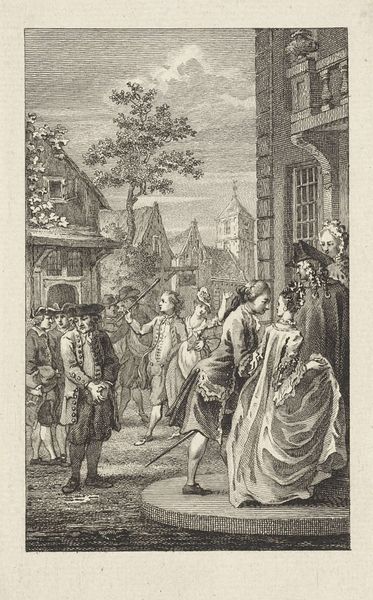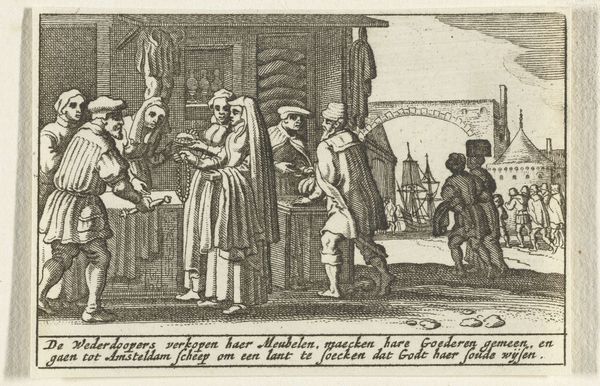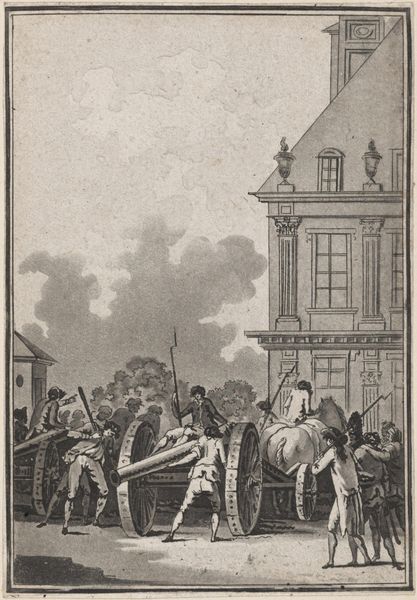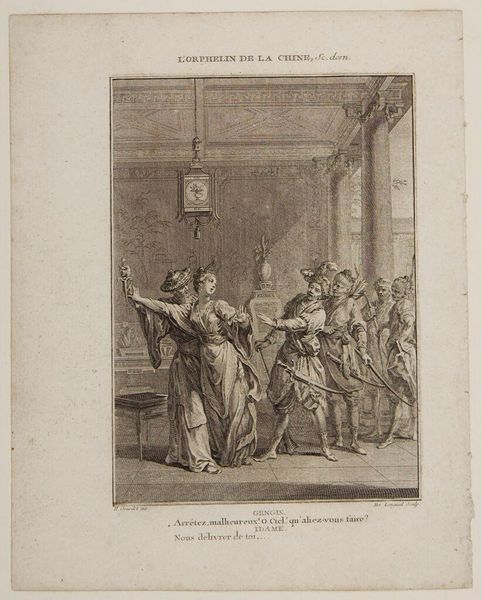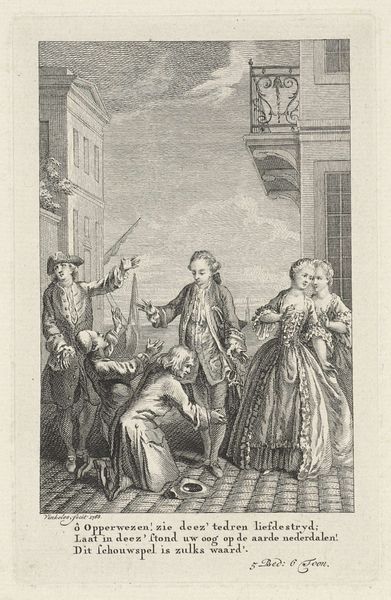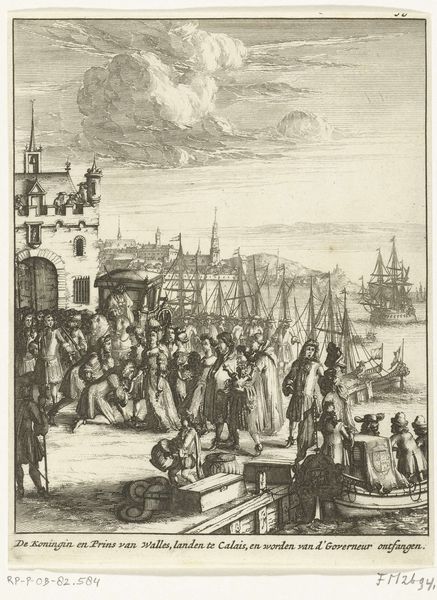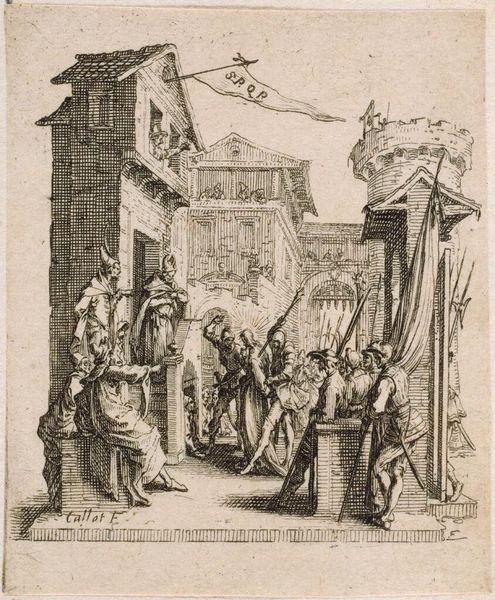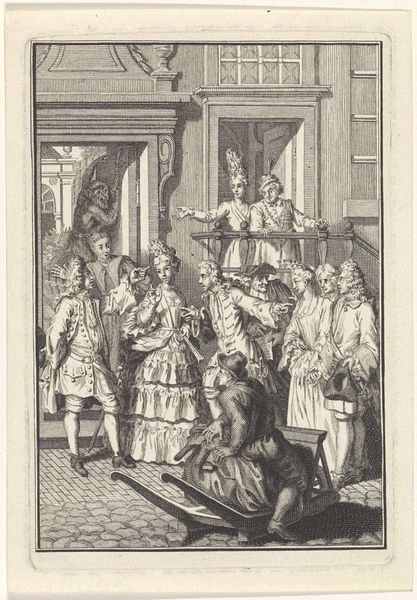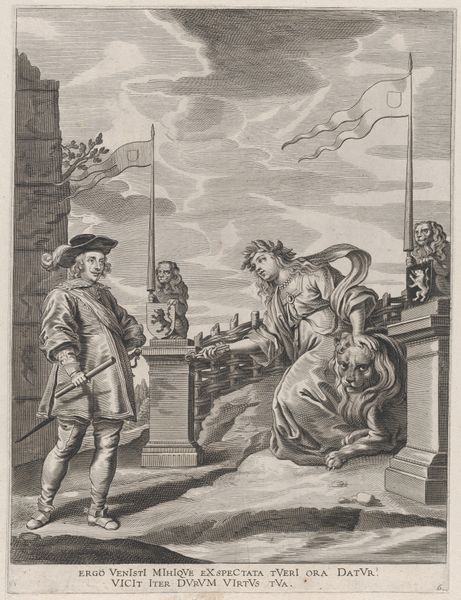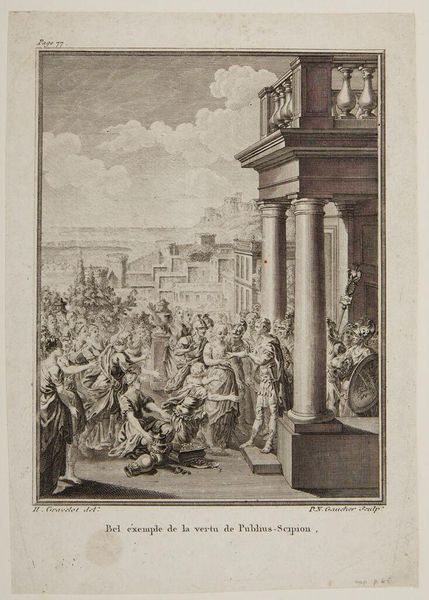
La Foire de Gonesse, from Choix de chasons mises in musique par M. De La Borde, Premier Valet-de-Chambre ordinaire du Roi, Gouverneur du Louvre. Ornées d'Estampes Par J.M. Moreau, Dédiées à Madame la Dauphine. A Paris Chez de Lormel, Imprimeur de l'Academie Royale de Musique rue du Foin Siant-Jacques. MDCCLXXIII. Avec Aprobation et Privilège du Roi. Gravées par Moria et M.lle Vendôme 1772
0:00
0:00
Dimensions: Sheet: 11 9/16 × 8 7/16 in. (29.3 × 21.4 cm) Plate: 9 1/8 × 6 in. (23.2 × 15.3 cm)
Copyright: Public Domain
Jean Michel Moreau the Younger and assistants created "La Foire de Gonesse" in 1773 using engraving techniques, printed in ink on paper. The print’s stark black and white palette reflects the incisive nature of the engraving process itself. Notice the precisely cut lines, which create areas of light and shadow that convey a bustling marketplace scene. The figures, though small, are rendered with incredible detail, demonstrating the engraver's mastery of the tools, techniques, and skilled traditions. The print comes from a book of songs, implying a broader context of cultural production and consumption. The scene is a window into the social life of 18th-century France, showing a fair, which was a key site for commercial exchange and social interaction. Consider the amount of labor involved, not only in the creation of the print but also in the goods and services being offered at the fair. Paying attention to materials, making, and historical context helps us appreciate the complex layers of meaning embedded in this artwork. It also challenges any rigid separation of fine art from the everyday practices of craft and commerce.
Comments
No comments
Be the first to comment and join the conversation on the ultimate creative platform.

